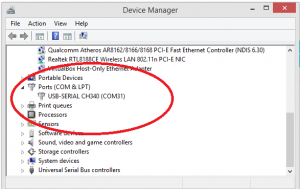Plug the ESP32 board to your computer. With your Arduino IDE open, follow these steps: 1. Download mac os 10.11 installer. Select your Board in Tools Board menu (in my case it’s the DOIT ESP32 DEVKIT V1) 2. Select the Port (if you don’t see the COM Port in your Arduino IDE, you need to install the CP210x USB to UART Bridge VCP Drivers ): 3. Install drivers for USB-to-Serial. A prerequisite to program ESP.-based modules usually is to establish a communications channel from your development platform (PC, Mac, Linux) to the device over USB. This in turn requires your system to detect the USB-to-Serial (aka USB-to-TTL, aka USB-to-UART) adapter on the ESP8266 or ESP32 module.
- CH340 Driver for Arduino UNO SMD, NodeMCU & USB to TTL. The CH340 driver chip is a USB converter chip, which converts USB to serial UART interface or to printer interface. In UART mode, CH340 provides common MODEM interface signals, to expand UART interface of computer or upgrade common serial communication devices to USB directly.
- I recently upgraded my MacBook Pro to Mojave. Now I'm not able to connect to my Arduino board with ch340g usb-to-serial chip. It is a Arduino board with AtMega 328 and ESP8266 integrated. I downloaded the drivers from the Chinese website for the ch340 and also removed old installations, like some tutorials tell me.
How to Fix FTDI Driver Issue on Mac and macOS
Mac Arduino Usb Driver

Ongoing macOS FTDI driver issues plague many users connecting the Arduino IDE to boards that use an FTDI chip. Since our boards use an FTDI chip for USB-to-serial communication, we have witnessed some of these issues when working with our boards using Mac and macOS.
The symptoms we have observed generally include the spontaneous loss of the USB serial port connection to the board or loss of the port after disconnecting and then reconnecting the board from the USB programming cable.
Rebooting the system can temporarily restore the port, but the problem eventually comes back. Since we’ve seen this issue pop up internally and with many customers, we decided to share what solution has been working for us so far.
The exact cause of this problem is not certain, but it seems to be related to Apple’s support, or lack thereof, for FTDI drivers in the operating system. Earlier versions of Mac OS X did not support FTDI drivers, so users would have to install third-party FTDI drivers. Somewhere around the release of macOS 10.12 Sierra (and maybe earlier), native support for FTDI drivers was included.

So, if you have followed an upgrade path from an older version of the OS without native FTDI support to a new version that has it, there can be contention between the native and third-party drivers. This potentially leads to the mysterious port disappearance issue.
We have found uninstalling the third-party drivers to be a solution. The instructions below have seemed to work for anyone here at Alorium Technology that was observing the FTDI issues.
Mac Arduino Usb Driver Download
Instructions
- To uninstall FTDI drivers you must be logged on to your computer as a root user. Follow Apple’s directions if this needs to be enabled on your computer.
- Be careful! By enabling root, you have privileges to change and delete files that are required by your computer.
- Follow steps 4.1 and 4.2 in FTDI Chip’s “FTDI Driver Installation Guide” to uninstall all third-party drivers on your computer.
- Disable root on your computer. Follow Apple’s directions below.
- Reboot your system
Want More Info?
Unibeast el capitan. Xbox game pass app for mac. Join our mailing list to stay in the loop with the latest news regarding Alorium products and other interesting things we are doing. Your email will not be shared, and we won't pester you very often!